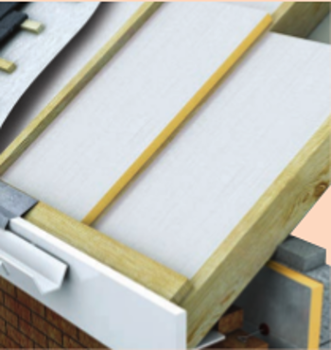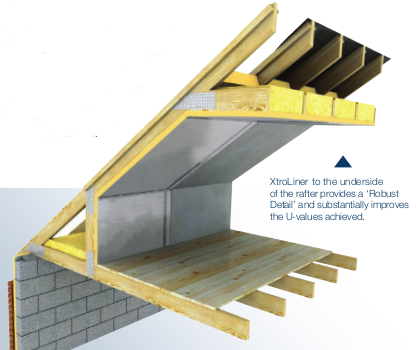The Importance of Proper Ventilation in Roof Insulation
Moisture Problems and Roof Ventilation
Usually not a lot of people are familiar with the fact that a vast amount of heat is lost through the roof space. Namely, unprotected and uninsulated roof is a great source of both heat loss and heat gain. Basically, if the roof gets to hot during summer it will emit the heat into your home and raise the inner temperature. On the other hand, leaky and damaged roofs will also allow the heat from your home to escape outside during winter thus lowering your home’s inner temperature. This is why proper roof insulation is very important, especially if you do not have any loft space or you are not using as a living space. However, installing insulation is only one aspect in providing necessary protection for your roof, since there are also some other potential issues you need to think of, such as preventing the moisture from penetrating in and affecting the stability of the structure and the overall commodity within your home. Well this problem can be somewhat solved by properly venting your roof space which as important as insulation itself. We will herewith try to explain the importance in proper ventilation in roof insulation and indicate some most common problems when adding insulation.

Our first word of advice refers to the insulation itself. It is actually pretty straightforward – always insulate! Namely, the insulation method and the insulation material may differ, depending on whether you are planning on converting your loft or you only have some free space in your loft you are not planning on using it, but this does not affect the importance of insulation itself. The basic rule is quite simple – if you are not planning on converting your loft, then you are better off with insulating the roof, whereas the insulation will depend on whether you are having a pitched or a flat roof. This way, you will add insulation but you will not stop the heat exchange between the loft space and the rest of the interior. On the other hand, if you just want to isolate the attic space from the rest of interior, then you better insulate the floor of the attic space. There is a variety of insulation materials you can use, depending on the accessibility of the roof space, the goal you want to achieve and type of your roof. You can opt for some rigid insulation boards, fibre insulation (mineral or glass wool) or reflective foil insulation which is a very good solution for roof spaces.

Roof Ventilation Issues
Apart from the mentioned advantages of proper insulation, another thing you need to worry about is the importance of proper roof ventilation. This aspect of protecting your roof includes the following:
- The most important thing is that your roof needs to have vents so that the excessive moisture can escape the roof space. This will not only protect the roof and the rest of your interior but also the installed insulation which can get seriously damaged if the constantly influenced by damp and moisture. The number of vents within roof space will depend on the size of the roof, whereas the rule of thumb is that a single vent should be sufficient for a 30m2 roof space. Also, if you do not have a vapour barrier installed, you should probably double the number of vents.
- If you have properly ventilated your roof space, then you will have to keep the vents free so they can allow air exchange. This means that they should not be covered with insulation or anyhow obstructed, since that way the moisture will still stay trapped within the roof structure and eventually penetrate and damage the insulation installed.
- Please note that any subsequent work undertaken on the vents need to be carefully done so you do not decrease the vents or anyway stop the airflow. For instance, if you have any louvers installed onto the vents, you will need to increase their size or alternatively add another vent.
When adding roof insulation, people usually forget about the hatch door. Namely insulating the hatch door is as important as insulating the rest of the roof space. This because the uninsulted hatch door will still allow the heat to escape through the gaps around it thus affecting the overall effectiveness of the insulation. When adding insulation, it is extremely important not to block or cover the vents, especially if they are located near the attic door.
- Finally, a way of securing proper roof ventilation is by protecting the vents with baffle boards which should be purchased separately and installed around the vents, making sure that the vents are free and not blocked in any way.
For more info about appropriate insulation products for your insulation project contact Insulation London via email at info@insulationlondon.co.

















































































































